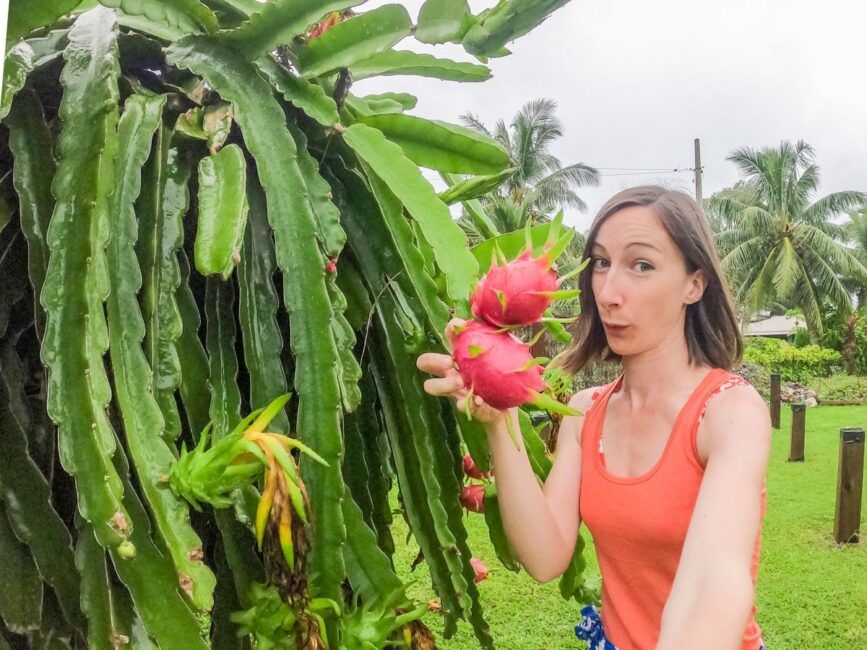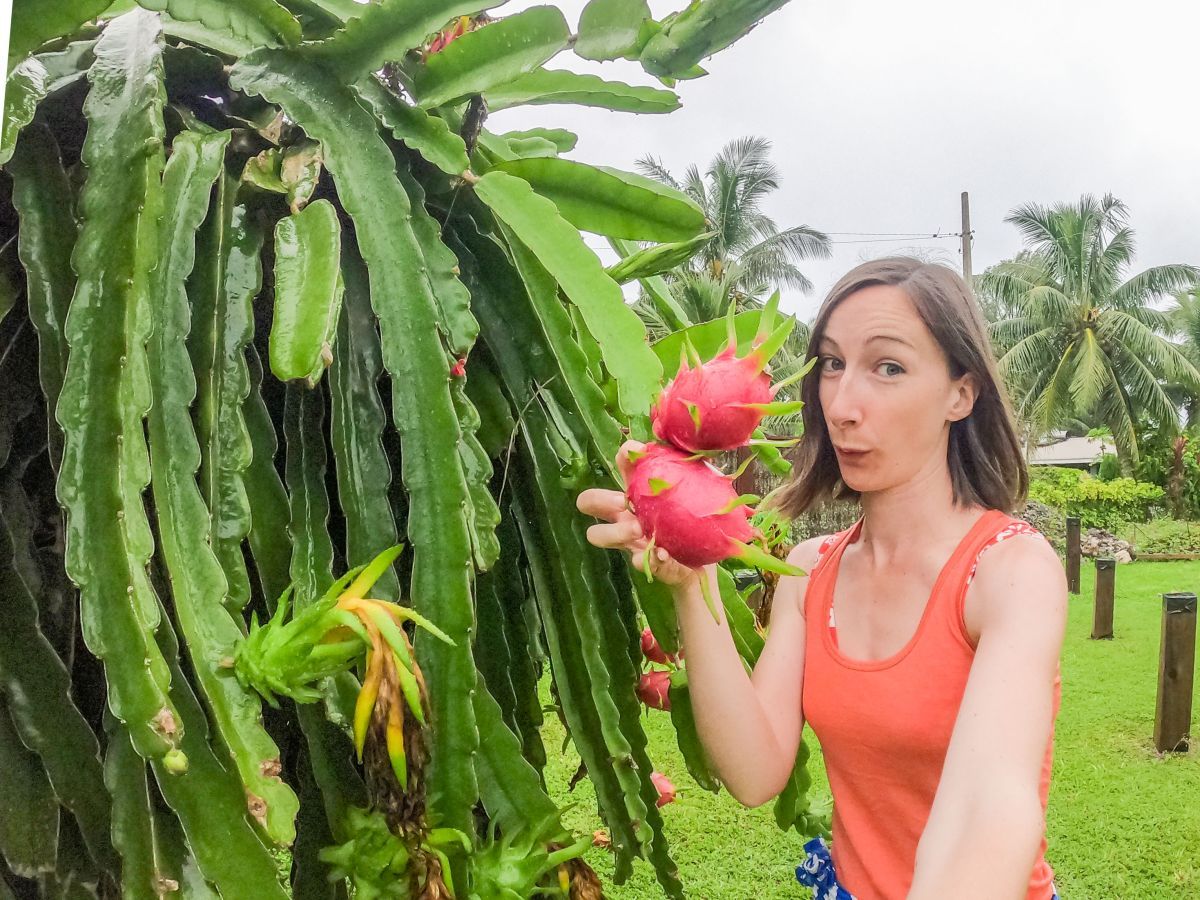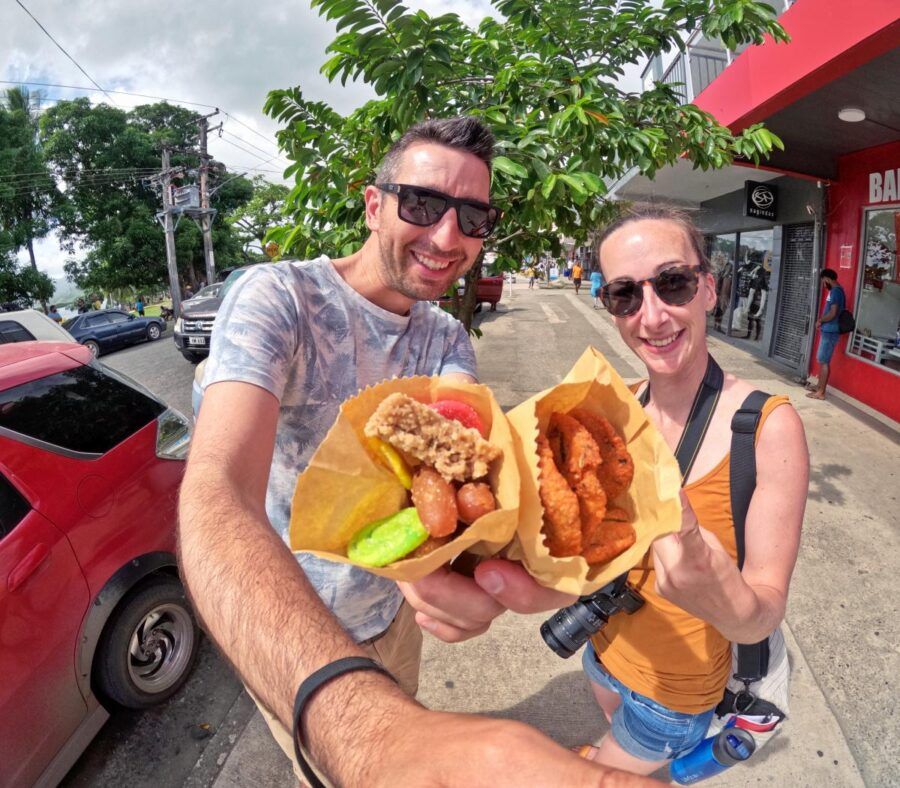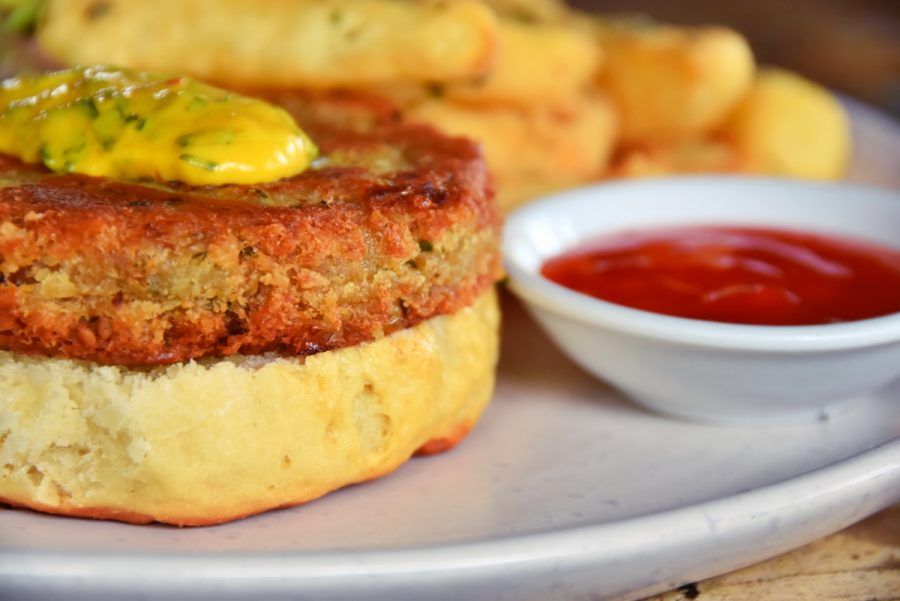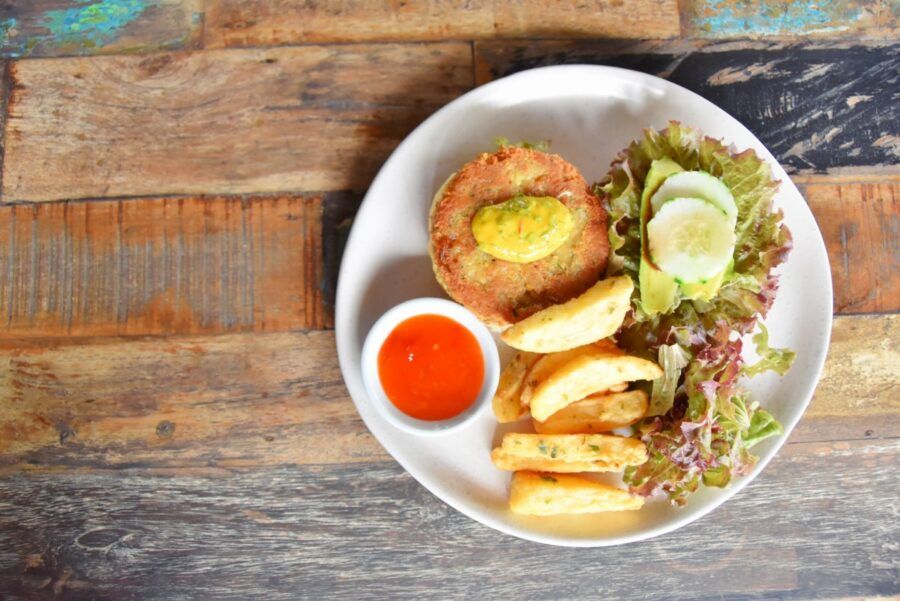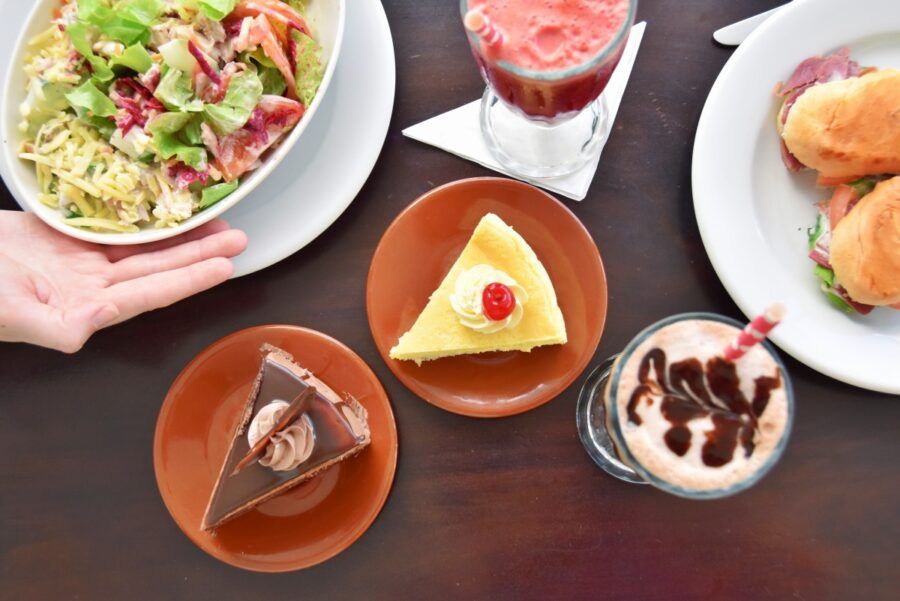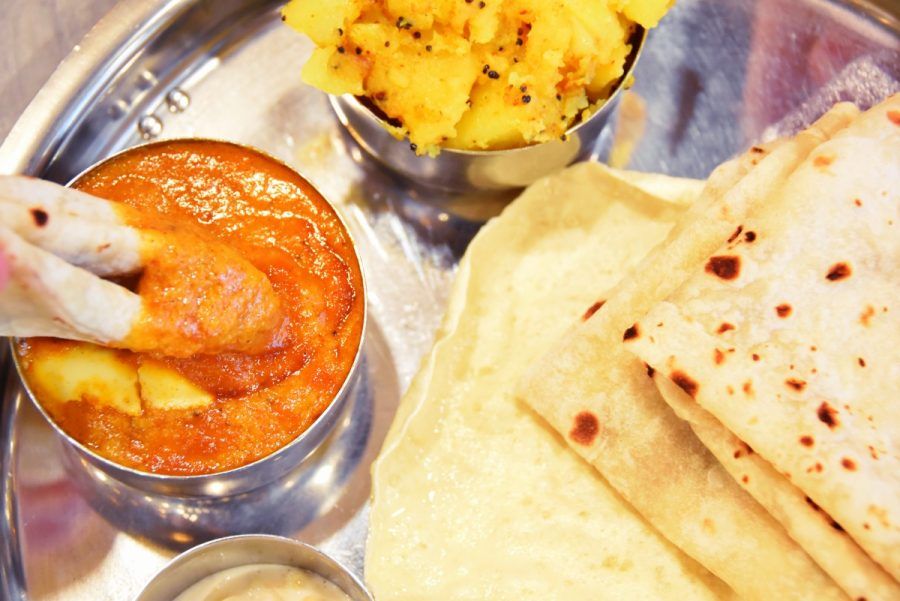What Fruits Can You Find in Fiji?
A trip to the islands of Fiji isn’t just about lazing on the beach, drinking cocktails and soaking in the sun. It’s home to an array of foodie experiences, thanks to its ideal climate for tropical produce combined with a rich local culture that knows how to prepare them well. One of the top recommendations we have for foodies and non-foodies alike is to check out the local produce markets, not only to mingle with the locals but to see the array of exotic fruits. Chances are, there are many fruits you will have never seen before, along with fruits you know like you’ve never seen before! In this guide to fruits in Fiji you have to try, we list all of the fruits well worth looking out for (and trying) throughout your travels.
For more foodie tips, see our Guide to Fiji Food and our Foodie Destination Guides.
Table of Contents
1. Soursop (Seremaia)
This prickly fruit might not look like the sexiest fruit, but its flavour packs and punch, making it extremely “moreish”. The Fijian soursop grows in abundance between June and September, so look out for them at the Fijian produce markets during this time. Soursop can be found in Fijian desserts, cocktails, jams and jellies. What’s more, the soursop is rich in antioxidants and all that good stuff.
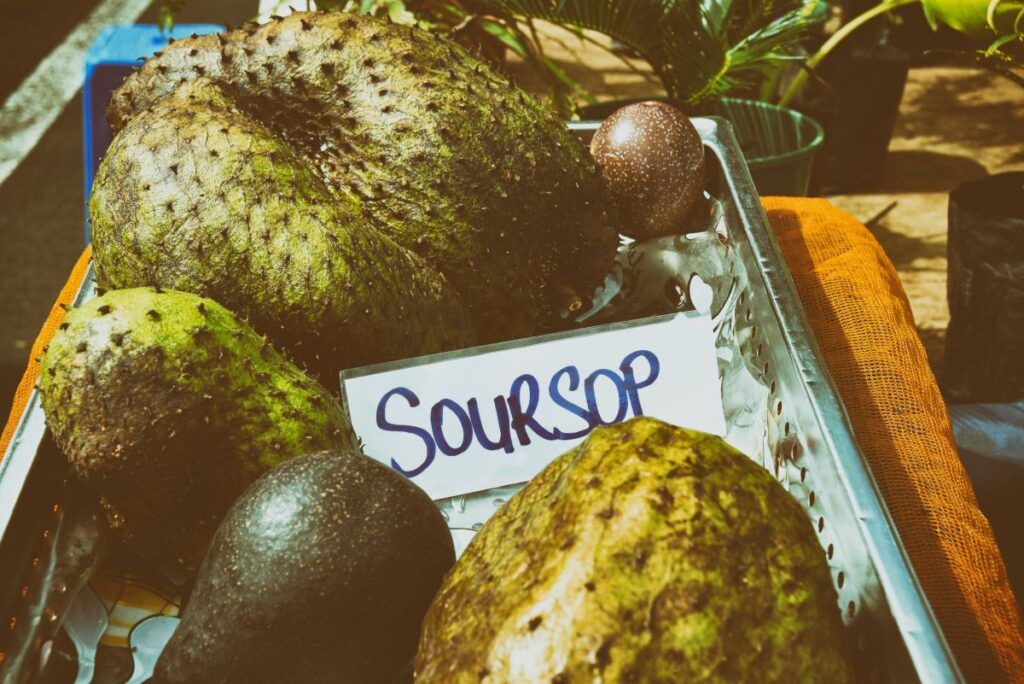 © FijiPocketGuide.com
© FijiPocketGuide.com
2. Mangos (Maqo)
So it’s highly likely that you are well-versed in mango, but with mangos growing pretty much everywhere in Fiji, it’s a fruit you have to try! Mangos come in all sorts of shapes and sizes in Fiji, with the mango season being in the summer months between October and November. Where can you try mangos? Well, mangos are likely to be growing outside of your “bure” at your resort, ready to pick if you’re skilled enough. Otherwise, they’re common at produce markets or as part of your continental breakfast.
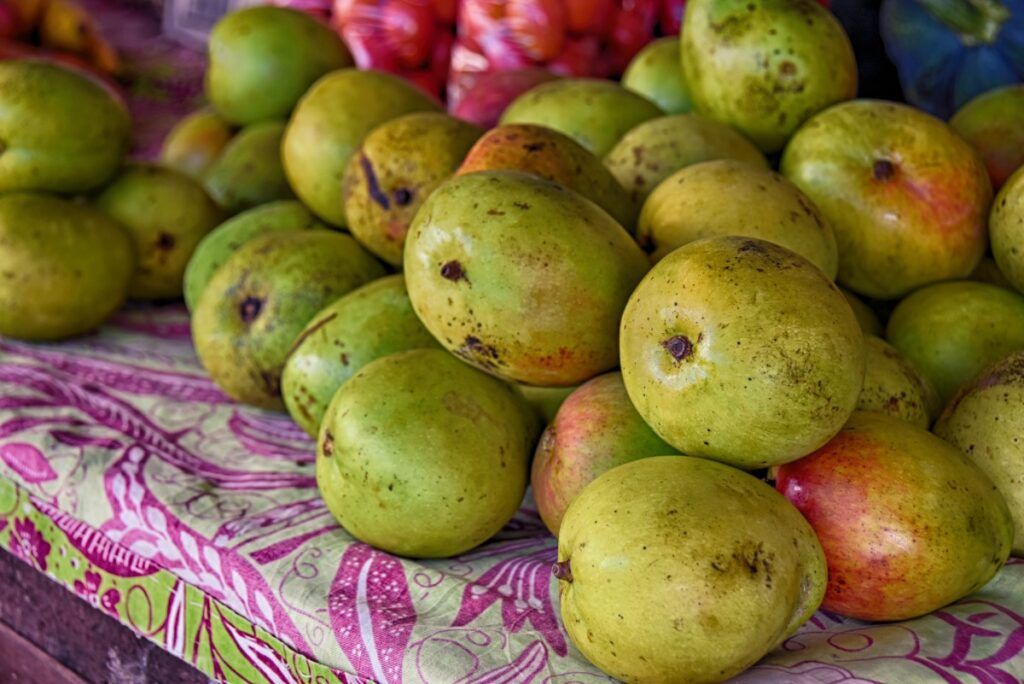 © FijiPocketGuide.com
© FijiPocketGuide.com
3. Papaya/Pawpaw (Weleti)
Admittedly, papaya, or commonly known as pawpaw, is not native to Fiji but has become a staple of the Fijian diet. The climate here is ideal for growing smooth and sweet pawpaw, which is often served as a breakfast fruit or with dessert.
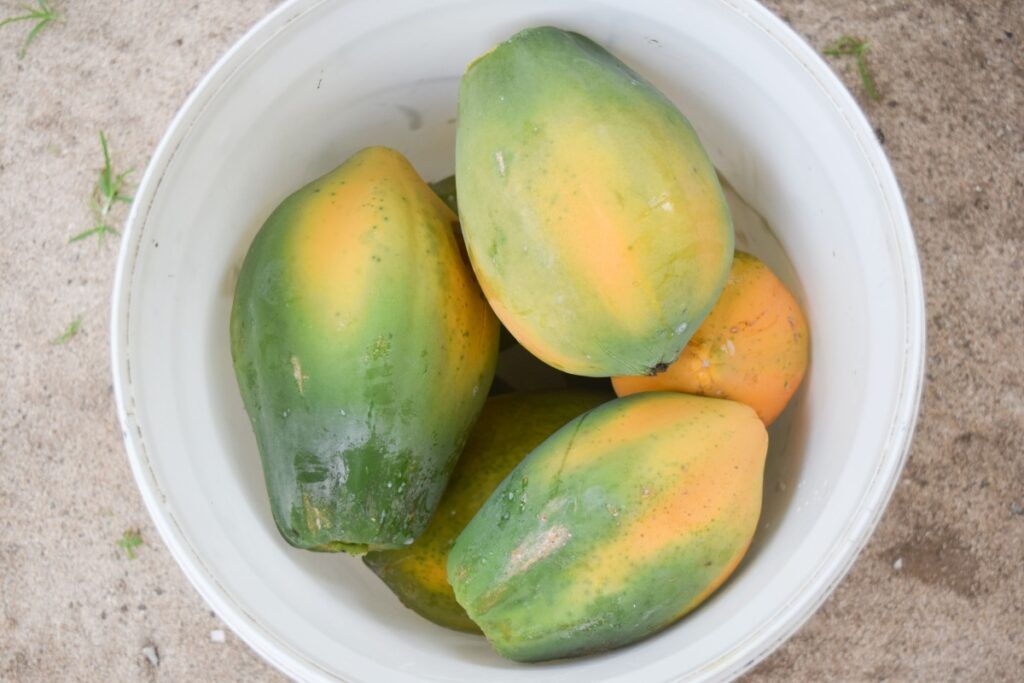 © FijiPocketGuide.com
© FijiPocketGuide.com
4. Rambutan
One of the crazier-looking fruits in Fiji, rambutan looks like food from another planet, let alone an isolated group of islands. Within its red and green furry skin lies a jelly-like flesh tasting similar to a grape with a slight citrus edge. All in all, it provides an unforgettable experience for the palette. Don’t miss the chance to try one if you spot them in a produce market, as they are also packed with anti-oxidants to keep the immune system in top shape.
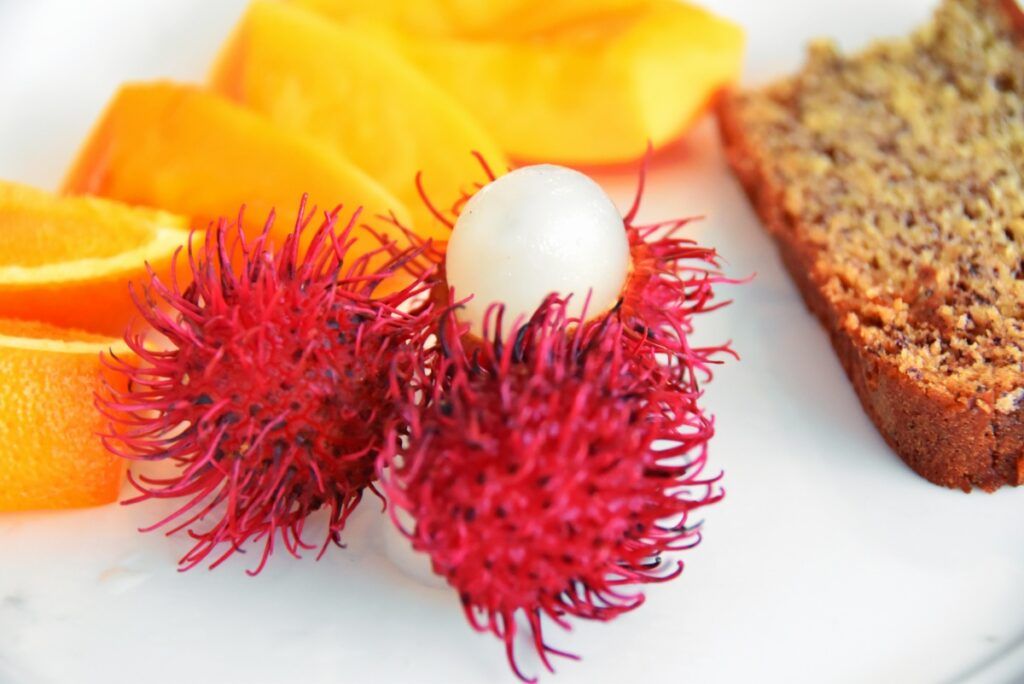 © FijiPocketGuide.com
© FijiPocketGuide.com
5. Dragon Fruit
Successfully grown in dense, humid and high temperatures, dragon fruit grows in Fiji during the wet season (summer). It’s another fruit with an odd appearance, usually bright pink with wide spines and white flesh with scattered seeds. This is a common fruit to enjoy just raw, scooping out the inner flesh, or you could have it in fruit salads or cocktails. See more fruity drinks to try in the 10 Drinks in Fiji You Have to Try.
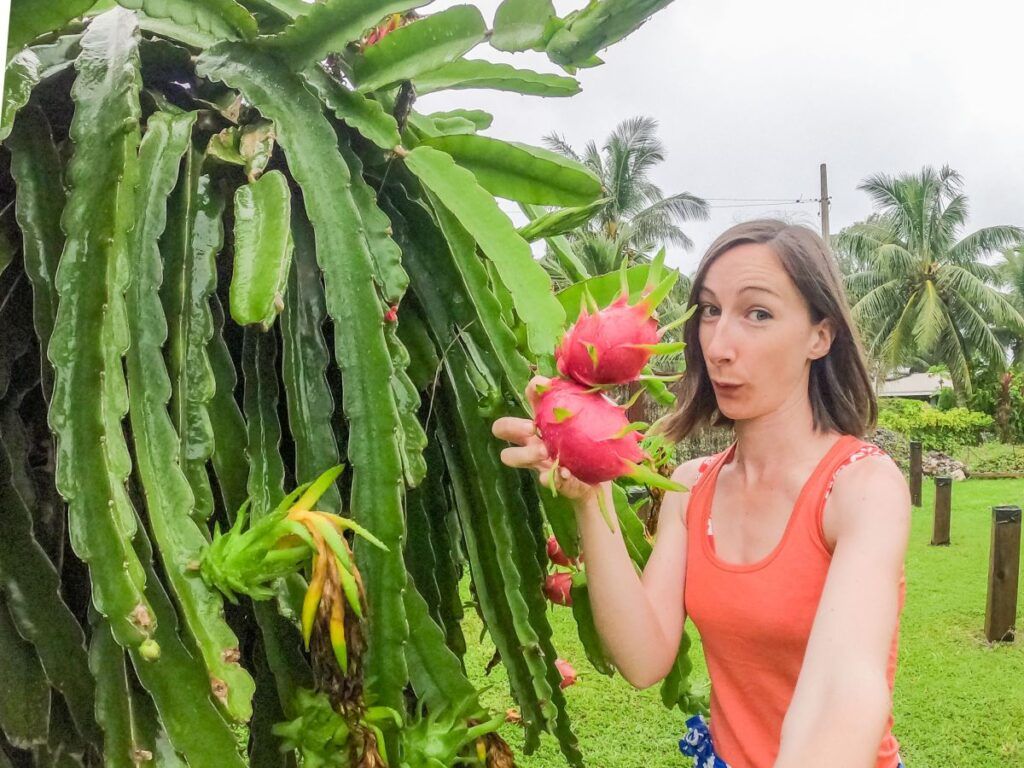 © FijiPocketGuide.com
© FijiPocketGuide.com
6. Guava (Quwawa)
While guava is found in many tropical locations across the world, many people try it first in Fiji. The flavour is sweet but subtle, often compared to the taste of apple, pear and strawberries. However, it looks extremely different with dense green skin and a deep pink to light peach flesh. While guava is a great fruit for your dose of vitamin C and folic acid, be warned that the seeds are very hard on the teeth.
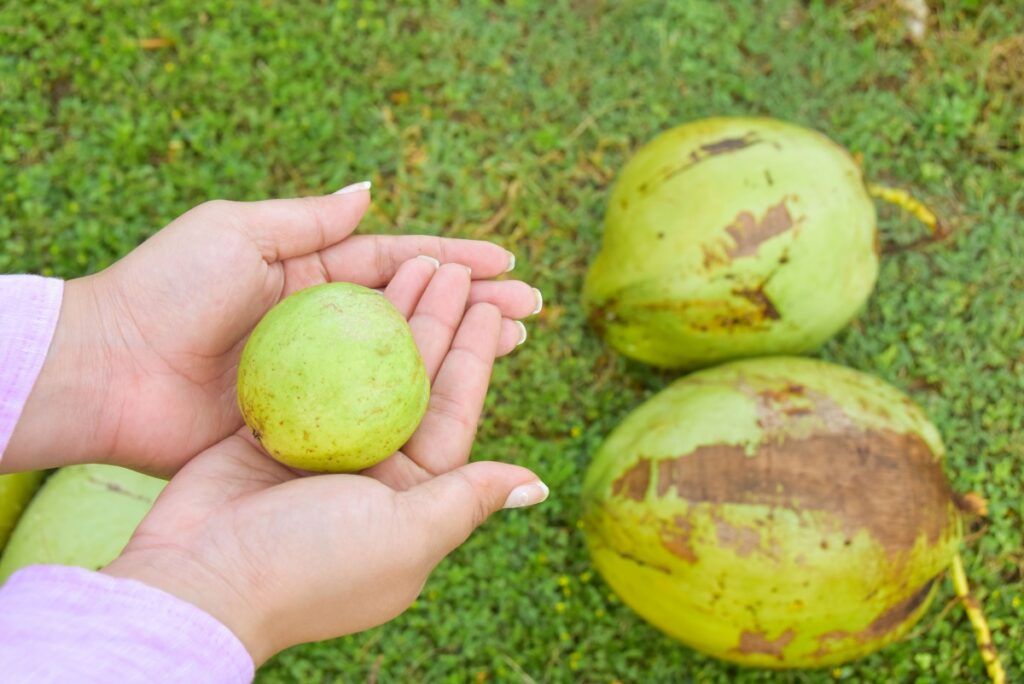 © FijiPocketGuide.com
© FijiPocketGuide.com
7. Pineapple (Balawa)
Ok, so the pineapple is nothing new to most of you, but wait until you try the pineapples in Fiji! Pineapples in Fiji are usually a lot smaller than pineapples that are exported overseas, allowing a more concentrated flavour and juice. You certainly won’t struggle to find pineapples in Fiji, which are widely available at supermarkets, produce markets and often served for breakfast at resorts.
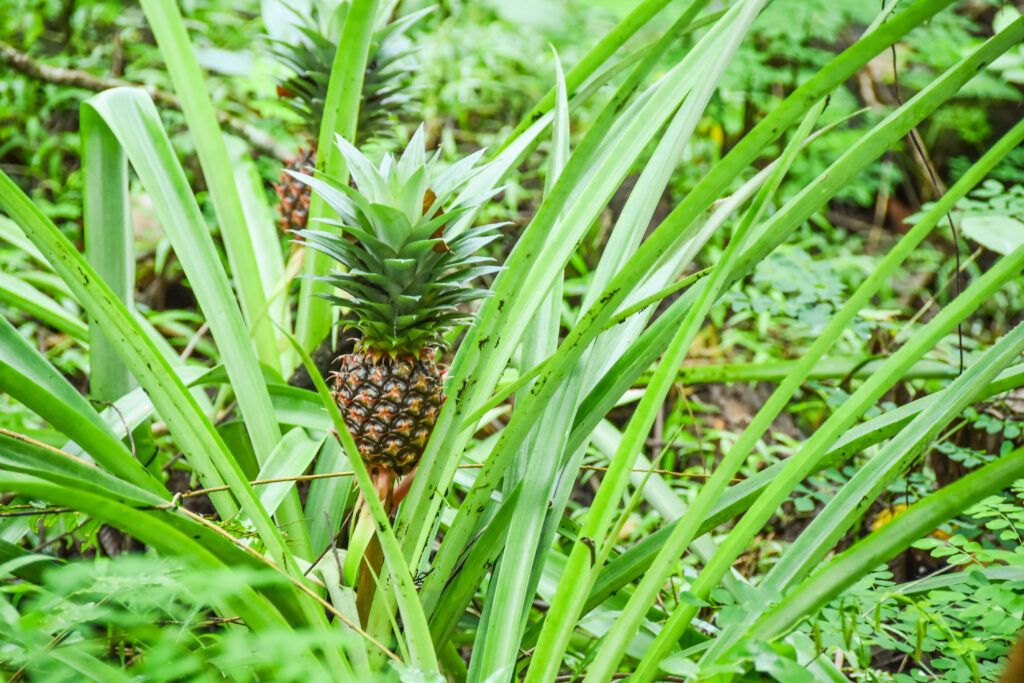 © FijiPocketGuide.com
© FijiPocketGuide.com
8. Banana (Jaina)
Far from your large manicured bananas found in the supermarkets at home, bananas in Fiji come in many different varieties and are packed with flavour! Bananas are a part of the daily diet here in Fiji and are one of the most abundant fruits you’ll find. There are tiny varieties of bananas, which are soft and sweet with flavour, while another variety called plantains are a little more starchy and are used for cooking.
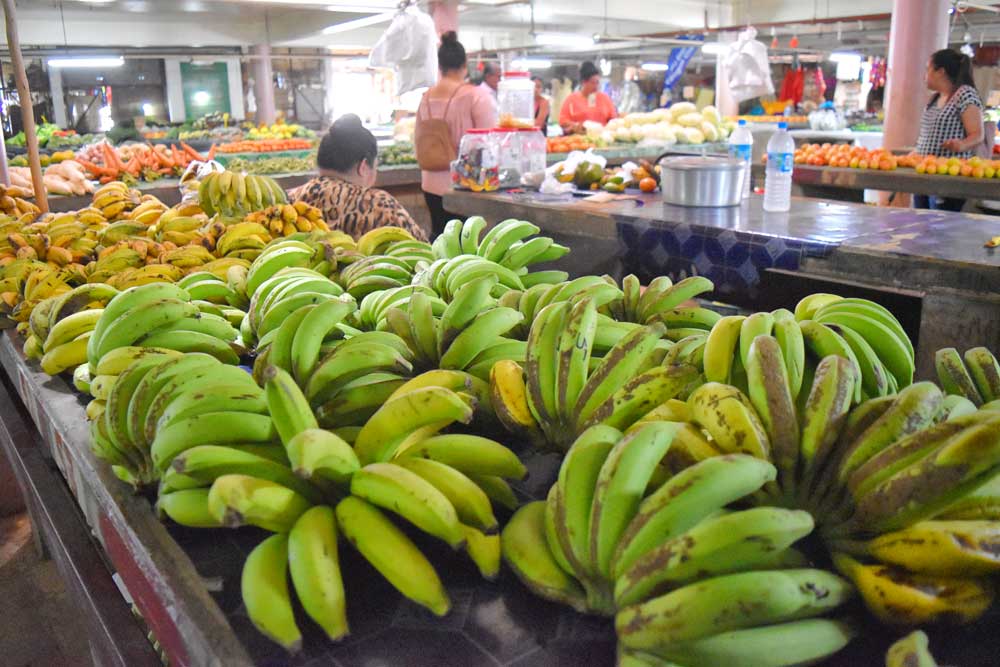 © FijiPocketGuide.com
© FijiPocketGuide.com
9. Coconut (Niu, Bu)
Anyone who’s anyone knows that the coconut is not a nut; it’s a fruit! Of which, it is the most important fruit in Fiji coming from the tree known as the “tree of life”. Coconuts have a huge variety of uses in Fiji, which is best explained by attending a coconut demonstration put on by many of the resorts – see the 10 Best Foodie Experiences in Fiji. As for food, coconut milk is used extensively in Fijian cooking, from kokoda used with raw fish to lolo buns which are steamed coconut bread rolls. See more food to try in Fiji in the 20 Unique Foods in Fiji You Have to Try.
 © FijiPocketGuide.com
© FijiPocketGuide.com
10. Passion Fruit
Last but certainly not least, the passion fruit is a must-try in Fiji. While it is gaining popularity outside of the tropics, passion fruit still often confuses people when they see its gooey inside. Yes, you even eat that viscous seedy inside and it’s delicious! The small fruit is also packed with nutrients, like vitamin C, vitamin A, dietary fibre and is high in beta-carotene. You can also try passionfruit in a passionfruit cocktail!
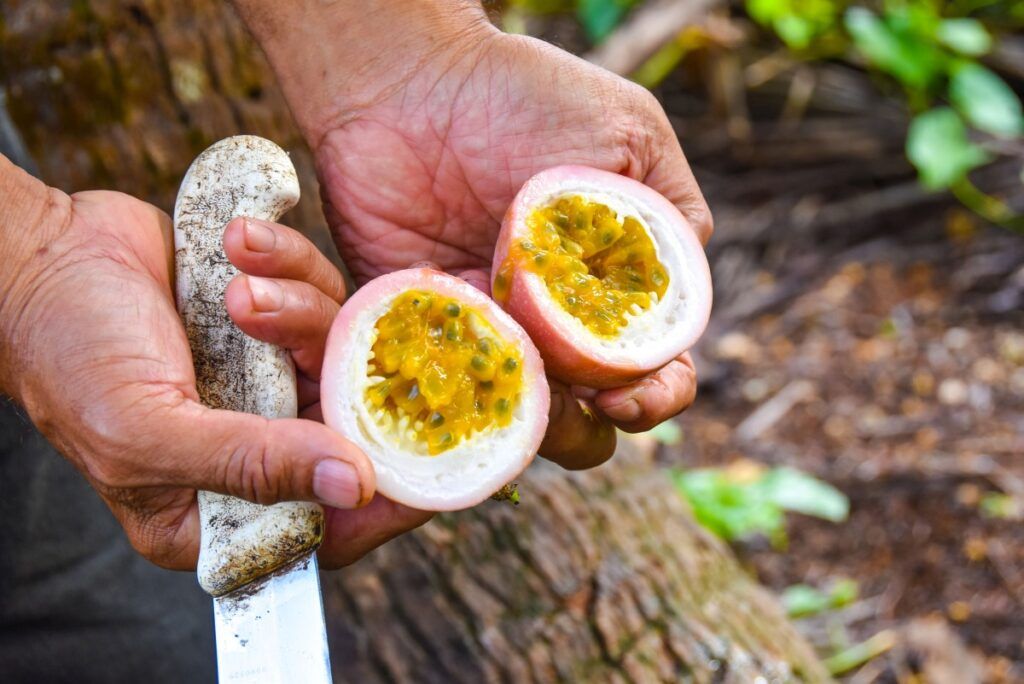 © FijiPocketGuide.com
© FijiPocketGuide.comMore on Where to Try Fruits in Fiji
That’s it for our guide to the fruits in Fiji; for more information about Fijian cuisine and nightlife, check out the following articles:
- The Complete Guide to Food in Fiji
- 10 Drinks in Fiji You Have to Try
- 10 Best Foodie Experiences in Fiji
Finally, if there’s anything we’ve missed, you’re likely to find it in our guide, Traditional Fijian Food: 20 Foods to Try in Fiji.
Sources:
The information in this guide has been compiled from our extensive research, travel and experiences across Fiji and the South Pacific, accumulated over more than a decade of numerous visits to each destination. Additional sources for this guide include the following:
- Tourism Fiji (General travel advice - Updated [2025])
- Fiji Hotel and Tourism Association (Tourism trade association - Updated [2025])
- SPTO (Pacific tourism advice - Updated [2025])
- Ministry of Tourism and Civil Aviation (Tourism statistics - Updated [2025])
- Land Transport Authority (Road safety advice - Updated [2025])
- Fiji Immigration (Visa and immigration advice - Updated [2025])
- Fiji Revenue & Customs Service (Customs and visitor taxes - Updated [2025])
- Biosecurity Authority of Fiji (Biosecurity advice - Updated [2025])
- Fiji Meteorological Service (Weather forecast and warnings - Updated [2025])
- Fiji Bureau of Statistics (Statistics and travel data - Updated [2025])
- Safe Travel (New Zealand travel advisory for Fiji - Updated [2025])
- Smart Traveller (Australia travel advisory for Fiji - Updated [2025])
- Travel.State.Gov (U.S. travel advisory for Fiji - Updated [2025])
Our editorial standards: At Fiji Pocket Guide, we uphold strict editorial standards to ensure accurate and quality content.

About The Author
Laura (Lora) S.
This article was reviewed and published by Laura, editor in chief and co-founder of Fiji Pocket Guide. Since arriving solo in the South Pacific over 10 years ago with nothing but a backpack and a background in journalism, her mission has been to show the world how easy (and awesome) it is to explore a paradise such as Fiji. She knows the islands inside-out and loves sharing tips on how best to experience Fiji’s must-dos and hidden gems. Laura is also editor of several other South Pacific travel guides.
